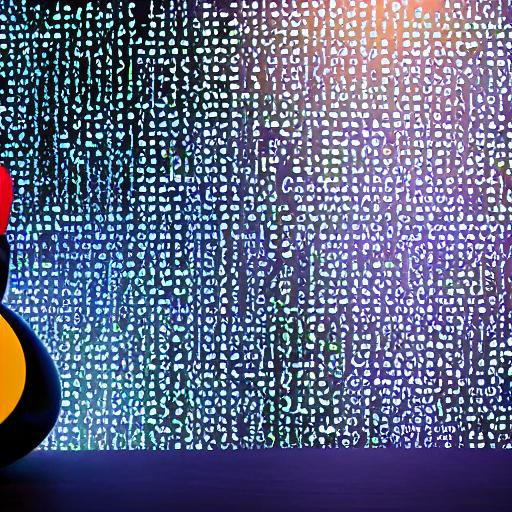The technology underlying ChatGPT, an AI system for conversational and inventive responses, has been included in a new version of the Bing search engine that Microsoft presented on Tuesday. This is the first significant opportunity in years to surpass search king Google.
The technology underlying ChatGPT, an AI system for conversational and inventive responses, has been included in a new version of the Bing search engine that Microsoft presented on Tuesday. This is the first significant opportunity in years to surpass search king Google.
According to the tech behemoth, Bing is now an “AI-powered co-pilot for the web,” offering search results enriched with data from Microsoft partner OpenAI’s extensive language model. Additionally, Microsoft has added a new chat window to Bing that it claims will assist the search engine to deliver shopping lists, travel tips, and trivia games. The technology can also be found in Microsoft’s Edge browser, which has the ability to create LinkedIn posts and summarize PDF files.
At a launch event held at the company’s headquarters in Redmond, Washington, chief executive Satya Nadella declared that all computer interactions will be mediated with the assistance of an agent. We’re going to have the idea of a co-pilot that will be present in all applications.
At a launch event held at the company’s headquarters in Redmond, Washington, chief executive Satya Nadella declared that all computer interactions will be mediated with the assistance of an agent. We’re going to have the idea of a co-pilot that will be present in all applications.
At bing.com/new, you may test out a preview version of the new “AI-powered co-pilot” technology using a select group of Microsoft-prepared inquiries and sign up to be included on a waiting list for a more widespread release. Microsoft intends to make it available to millions of people in the upcoming weeks and add a mobile version.
For the search industry, which hasn’t altered much over the years, the technology represents a significant new advancement. Although Google has made an effort to incorporate more solutions into its search results, new AI technology offers much more. Large language model-based chat technology—AI systems educated on big amounts of internet text—offers much more complicated responses and information.
With its chatbot assistant integrated with Bing, Microsoft does have a chance to become a more significant participant in the consumer tech market, according to Gartner researcher Jason Wong.
On Monday, Google, the market leader in search engines, unveiled Bard, its own AI chatbot, in an effort to surpass Microsoft. The “transformer” AI technology developed by Google, a strong competitor, is essential to these massive language models. For starters, Google, not Bing, is the most popular website now for information searches.
Microsoft, though, seems to be in front because the technology is integrated right into its products. Additionally, Yusuf Mehdi, chief consumer marketing officer at Microsoft, noted that when Bing added the AI data to its search results, “We saw the highest boost in relevance in two decades,” referring to how well the search results meet users’ needs.
According to Mehdi, Microsoft will display adverts next to the new AI search results.
As of January, Bing had a 3% percent of search engine usage, a significantly smaller share than Google’s 92%. Given that it inserts advertisements next to search results, search is Google’s main source of income.
According to CCS Insight analyst James Sanders, considering the very quick announcement to get ahead of Microsoft’s announcement today, he has to believe Google is a bit anxious about the prospect of credible competition in search they haven’t faced for much of their existence.
Microsoft makes an effort to stay away from potential problems with AI
Microsoft is attempting to steer clear of several serious possible AI issues. It refers to its AI responses as guidelines and launching points rather than the ultimate word, which is why “co-pilot” rather than “pilot” is used.
For instance, you should approach the AI text as a preview rather than the final words you’ll post when using Microsoft’s new AI tools to increase creativity. The system searches for reliable information sources using its own Bing technology while also removing unreliable data, such as AI-generated text with poor value.
For greater transparency, Bing occasionally cites its sources, such as articles that offer product recommendations. In contrast, it’s unclear where ChatGPT gets its recommendations and responses.
And the Bing interface includes a thumbs-down button for criticism next to a thumbs-up button for praise if you don’t like the outcomes.
Microsoft has hailed its Responsible Artificial Intelligence strategy as a crucial framework for directing its efforts and offering engineers tools to do so. According to Sarah Bird, a leader in AI ethics and accountability at Microsoft, an earlier version wasn’t substantial enough for usage in the real world. For instance, she added, despite Microsoft specifically prioritizing AI fairness, it was discovered by Stanford researchers that its speech-to-text technology didn’t perform as well for racial minorities.
There is a lot of enthusiasm for putting such principles into practice, according to Bird.
The initial stages of integrating the OpenAI tools are Bing and Edge.
When you utilized ChatGPT, you probably got a “wow” moment, according to Jordi Ribas, the head of Bing search and AI. Now, just picture doing that while you’re searching, surfing, composing a document, or attempting to write code.








